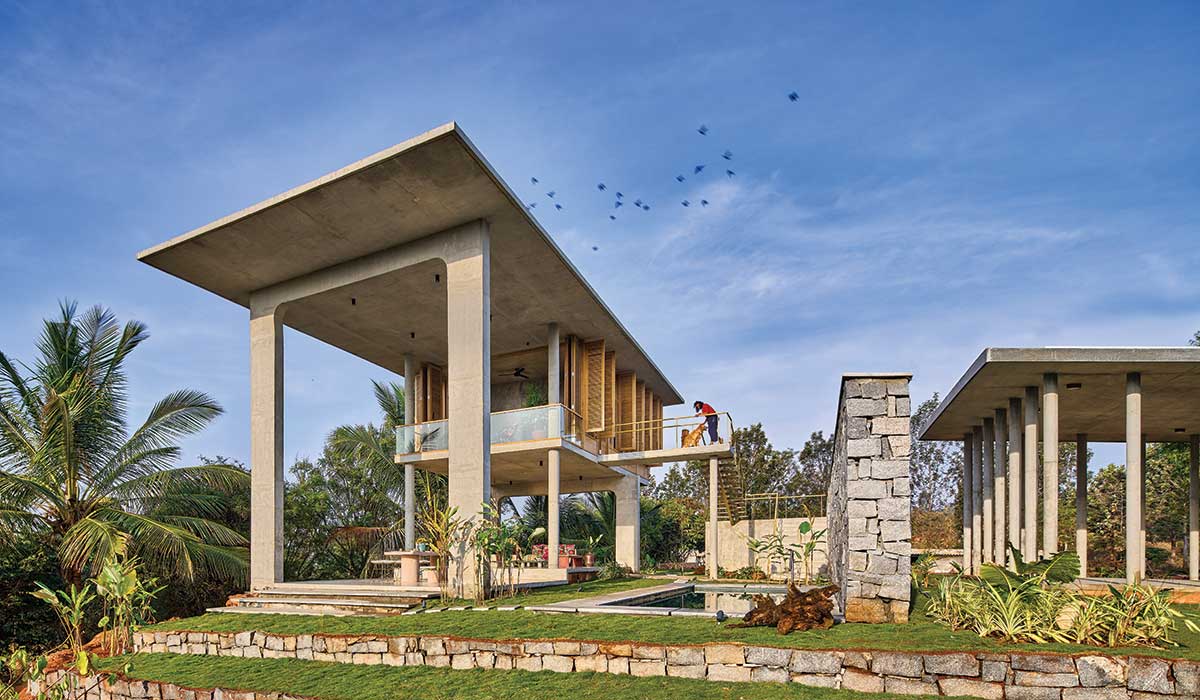
Fact File
Name of Project: Ksaraah
Location: Bangalore Rural
Site Area: 4 Acres
Built-Up Area: 5249.00 sqft
Start Date: 14 Jan 2019
Completion:14 March 2021
Photographer: Harshan Thomson
Products & Brands
Sanitaryware & Fittings: Toto
Flooring: Exposed Cement, Yellow Oxide
BMS: Lutron, Phillips
Lighting: Philips
Paint: Asian Paints
Consultants
Structural: Sigma Consultants
Civil: SS Constructions
HVAC: Blue Star
PMC, Electrical: Taliesyn
Landscape: Taliesyn
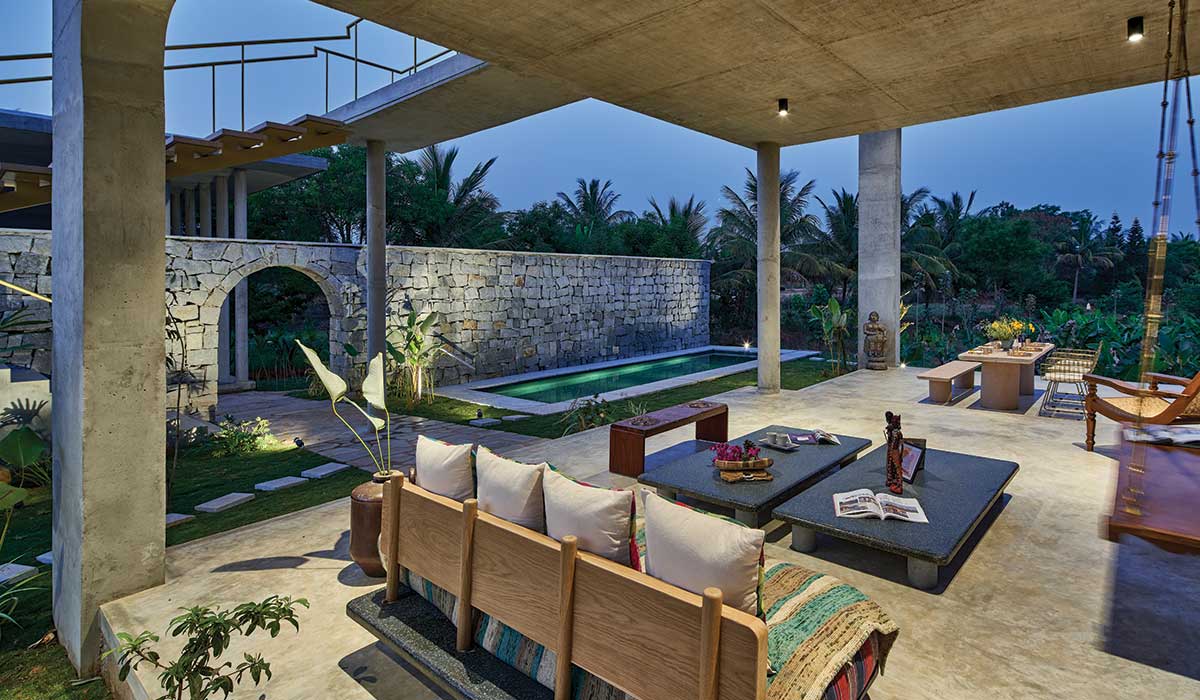
Nestled amidst coconut and areca tree plantations with the mighty Savandurga Hill – one of the largest monolith hills in Asia – in the backdrop, the two-storeyed primary residence is an interplay of volumes and voids. It is perched atop the site’s highest level, framing views of the farms that lie on the horizon.
Spatial Planning
Resting weightlessly on a set of two lofty, beveled arches, it creates expansive column- and wall-free spans with deep overhangs. The ground floor hosts communal spaces like the living, the dining, and a sit-out area, while the master bedroom and its ensuite bathing chamber, a private study and a lounge occupy the first floor.
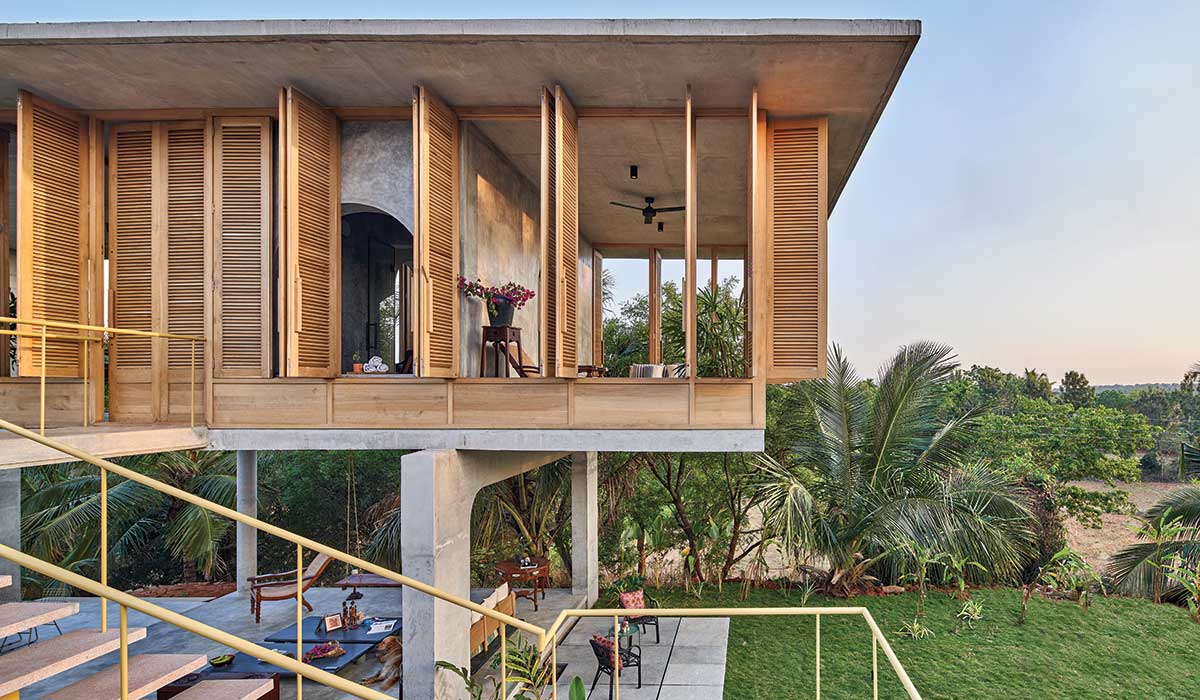
On the first floor, arched elements punctuate the space, complementing the stark linearity of the structure. Tall, louvered windows in oak wood traverse the floor’s perimeter, creating a permeable envelope that invites trees and plants indoors, while allowing the users to control ventilation and daylighting.
The spatial arrangement is specifically directed to traverse amidst the landscape, blurring the boundaries between the built and the un-built. A sleek, exterior staircase connects the two levels next to a pool – the epicentre of the residential quarters – its backdrop marked by a feature stone wall. The wall creates a three-dimensional site partition and marks the transition between the private and public functions of the house, while unifying the visual narrative.
The primary design challenge was to create a built environment that would blend, harmonize, and inspire. The design intervention, therefore, ensures minimum deviation from the existing landscape, while providing a space with limitless opportunities for the users to thrive in
Ar. G.S. Mahaboob Basha
Ar. Shalini Chandrashekar
An Exercise in Placemaking
Ksaraah also aims to address the needs of the local community. The design is focused on creating adaptable, multi-use, congregational spaces to bring people together and to foster activities and conversations.
At the heart of the site stands the 80-ft tall Pavilion composed of rhythmic modules that are orderly and aesthetic. A dynamic progression of circular columns stipples its perimeter, referencing the surrounding plantations; it is designed to ‘disappear’ once the surrounding trees grow to their maximum heights.
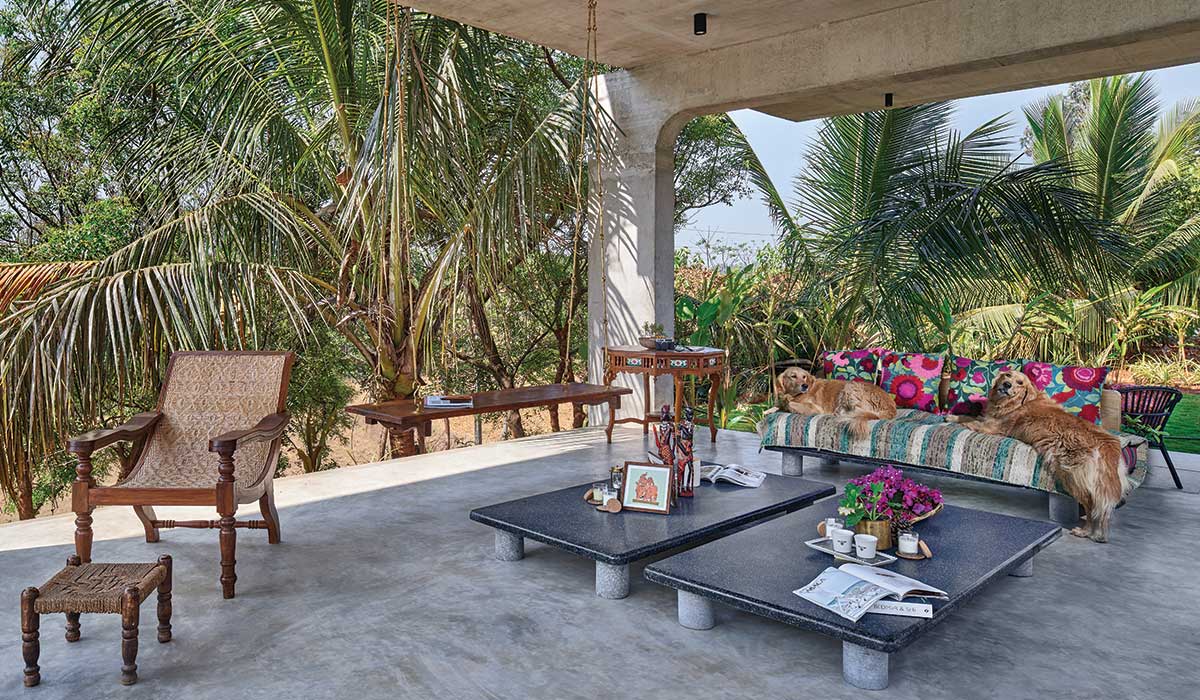
The Pavilion is a dynamic arena of sorts, bustling with energy. This recreational space can host an evening soiree, an artistic installation, a dance recital, or a musical rendezvous with equal flair. The cellar in the residential quarters also houses a studio, which can be used to engage with fellow artists on collaborative projects.
The Material Palette
Spaces act as a bare canvas for self-exploration and self-expression. Monochromatic concrete and cement finishes blend into the grey background on a dark, cloudy day. They are coupled with warm oak wood, which glistens in the sun and softens the architecture. Locally-sourced stones like Sadarahalli and Pink Magadi complete the textural leitmotifs of the residence. This spectrum of materials is pieced together keeping in mind that they age gracefully and require minimal maintenance.
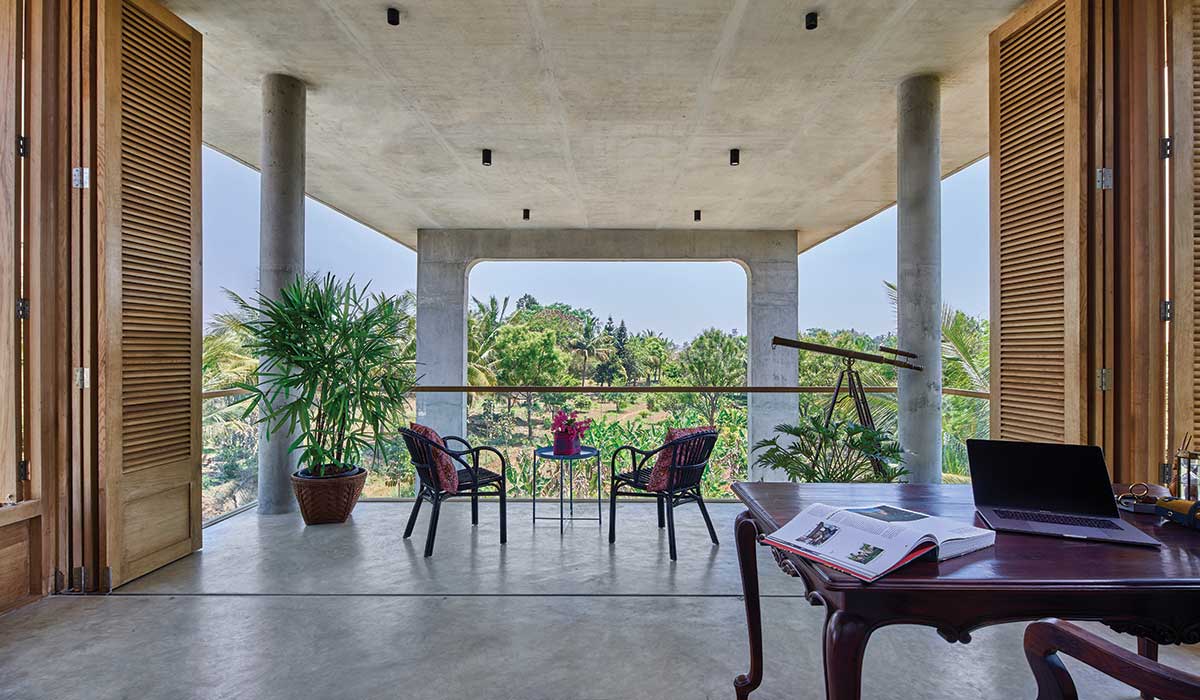
Being One with Nature
The design intervention was consciously limited in terms of changing the landscape or the natural occurrences within the site. Materials were chosen to last long. Stones were sourced locally from nearby quarries; waste stones were recycled into furniture. In the interiors, soft furnishings are a celebration of traditional Indian craftsmanship such as the kansa crockery.
Solar energy powers the entire building. To reduce the need for mechanical air conditioning, unwanted wall envelopes are negated and are replaced with plants and trees. Breathing walls for the sheltered spaces reduce indoor temperatures by an index of 4 degrees, ensuring optimal, natural air circulation and daylighting throughout the day. The pool, designed to catch the flow of the NE-SW breeze, also aids in evaporative cooling, and creates a comfortable microclimate on the site. The cellar with its stone walls and the earth filling around it remains cool throughout the year.
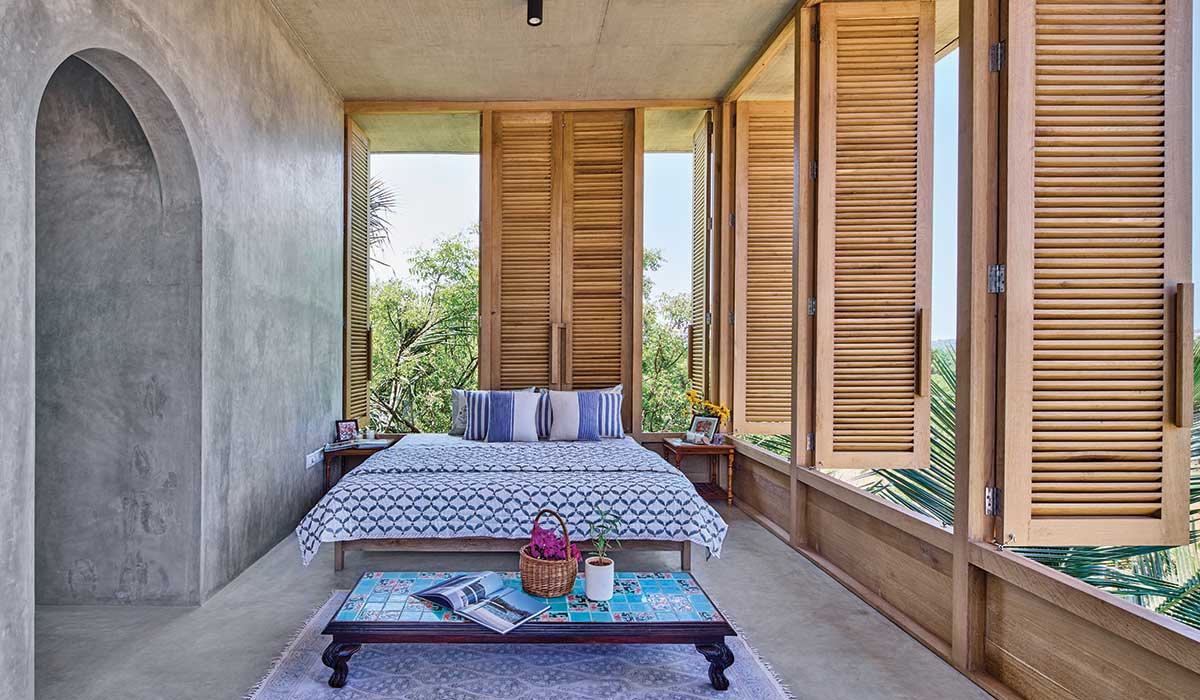
The pool without any filtered or added chemicals doubles up as a storage tank for the vegetation around. Wastewater from the household is recycled and channeled towards farming activities, nurturing the fruit trees on the site. Sculptural trees and flowering species are braided into the existing flora, densifying the greenery.
















